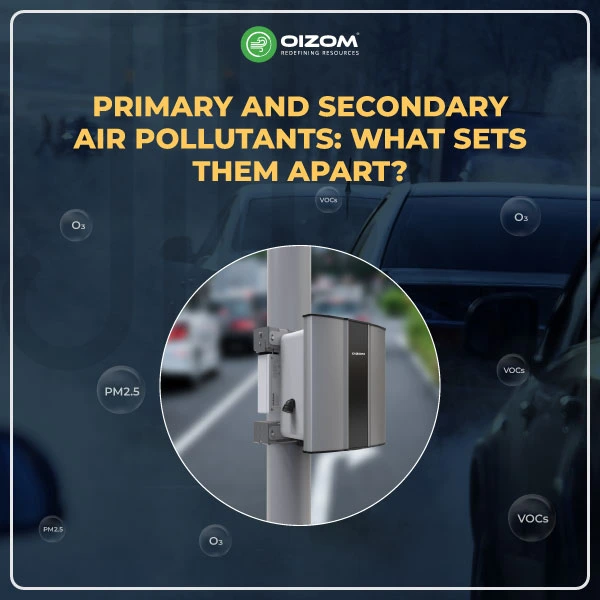In their developmental journey, the bustling metropolises we now inhabit have posed a pressing concern simmering beneath our feet: construction pollution. As we marvel at towering skyscrapers and intricate infrastructures, we must also grapple with the ecological repercussions of such rapid development.
What is Construction Pollution?
Construction pollution refers to various types of pollution generated from construction activities. These can impact the local environment, ecosystems, and human health. Construction pollution can be categorised into several types:
Air Pollution:
- Dust and Particulate Matter (PM): Construction sites are key dust sources. Activities such as excavation, site preparation, material handling, and vehicle movements stir up particulate matter. As per a research report from King’s College London, certain construction activities can increase particulate matter concentrations by up to 20%. These aren’t just numbers. Such particulates can invade our respiratory system, causing various health problems.
- Emissions from Equipment: Construction machinery, such as bulldozers, trucks, and generators, usually run on diesel fuel. These emit pollutants like nitrogen oxides (NOx), carbon monoxide (CO), volatile organic compounds (VOCs), and fine particulate matter.
- Volatile Organic Compounds (VOCs): Released during painting, sealing, and other solvents and chemicals activities.
Noise Pollution:
- The constant din of construction is unmistakable. Bulldozers, pile drivers, and the frequent beeps of heavy machinery in reverse disrupt urban tranquillity. Dr. Sandra L. Smith, an urban ecologist, found in her studies that this persistent noise affects human well-being and severely disrupts urban wildlife, from birds to small mammals.
- Construction sites often generate high noise levels due to heavy machinery, hammering, drilling, and other activities. This can disturb residents and wildlife.
Water Pollution:
- Sediment Runoff: Construction can disturb land surfaces, leading to increased erosion. Rain can wash this sediment into nearby waterways, impacting aquatic life and water quality.
- Chemical Spills: Accidental spills of fuels, solvents, paints, and other chemicals can contaminate local water sources.
- Wastewater: Water used during construction for purposes like concrete mixing or site cleanup can become polluted and should be treated or managed properly to prevent contamination of local water bodies.
Land Pollution:
- Due to the deposition of waste materials, the topography can be altered, potentially affecting local ecosystems.
- If hazardous materials are used or uncovered during construction, they can contaminate the soil.
- Every construction site, at one point or another, deals with spills — oils, solvents, and various chemicals. These spills, unless immediately addressed, seep into the ground. This compromises the soil’s health and, by extension, the health of the ecosystem it supports.
Light Pollution:
This is especially an issue in projects that operate at night. Excess lighting can disturb nocturnal wildlife and residents.
Solid Waste and Debris:
Construction activities generate significant waste, including scrap materials, packaging, and old building components.
How Does Construction Impact the Environment?
The construction sector’s carbon footprint is significant. But it’s not just about the direct pollutants. The raw materials, the energy consumed in transporting them, and the life-cycle emissions of the building are all intertwined in this web.
While essential for urban development and infrastructure growth, construction activities have profound environmental implications. To truly understand the depth of its influence, one needs to dissect the lifecycle of a construction project from its inception to its completion and beyond.
Resource Extraction and Consumption: Every construction project begins with acquiring raw materials. The extraction processes, mining for metals and minerals, quarrying for stone, or logging for timber often disrupt the local ecosystems. Habitats get destroyed, water systems can be polluted, and local communities might be displaced. The sheer scale of material required is staggering. According to the United Nations Environment Programme, the construction industry consumes up to 50% of the planet’s natural resources.
Emissions and Air Quality: Manufacturing construction materials, especially cement, is energy-intensive and contributes significantly to greenhouse gas emissions. The World Business Council for Sustainable Development reports that cement production alone contributes to around 5% of global CO2 emissions. Moreover, transporting these materials to construction sites emits CO2 and other pollutants.
Waste Production: A construction site is riddled with waste. The debris generated is monumental, from unused materials and discarded packaging to broken equipment and rubble. If not managed properly, it ends up in landfills, exacerbating the landfill crisis in many regions. The UK’s Waste and Resources Action Programme (WRAP) estimates that construction, demolition, and excavation activities produce around 120 million tonnes of waste annually in the country.
Land Degradation: The initial stages of construction involve clearing out land, which might mean felling trees, disrupting green patches, and often leading to soil erosion. This loss of green cover can lead to an increase in the urban heat island effect, reducing the overall capacity of the region to absorb CO2.
Water Management Issues: Large-scale construction often tampers with the natural water flow. Besides, the runoffs from construction sites can carry pollutants, sediments, and other harmful chemicals to nearby water bodies, affecting aquatic life and potentially contaminating water sources.
Noise and Light Pollution: Construction activities, especially those that run round the clock, contribute to the ever-increasing problem of noise and light pollution in urban settings. This affects human populations by disrupting sleep patterns and increasing stress levels and impacts nocturnal animals and their behaviors.
Long-term Impacts: Once a construction project is completed, its environmental footprint doesn’t end. Depending on its design, efficiency and location, a building could continue to consume energy and water at high rates, contribute to the urban heat island effect, and generate waste through its occupants.
Biodiversity Loss: In areas where construction happens in previously undeveloped regions, habitats are directly lost, leading to a decline in biodiversity. Often, flora and fauna native to that place are pushed out or face extinction due to losing their natural habitats.
In conclusion, while construction is a signifier of development, progress, and often economic prosperity, its environmental costs are substantial. The need of the hour is to steer the industry towards sustainable practices, innovative green technologies, and designs that are in harmony with the environment. The vision should be a built environment that complements the natural world rather than competes with it.
Mitigation measures for construction pollution include:
Mitigating the environmental impacts of construction involves good planning, implementing best practices, and monitoring to ensure compliance. Here are some of the essential measures that can be taken:
Dust Control:
- Water spraying dampens the soil and construction materials, reducing airborne dust.
- Use of barriers: Temporary walls or fences can prevent the spread of dust to nearby areas.
- Vehicle speed limits: Slower speeds reduce the dust kicked up by vehicles.
Noise Control:
- Use of noise barriers or sound shields around noisy equipment.
- Schedule noisy activities during regular working hours to minimise disturbance.
- Use quieter machinery when possible.
Before when implementing noise control measures on a construction site, it’s crucial to consider the importance of noise monitoring. Learn more about the significance of noise monitoring in construction sites.
Water Pollution Control:
- Erosion and sediment controls, like silt fences, can prevent sediment from running off construction sites.
- Proper disposal of wastewater.
- Use of spill kits to manage and clean up accidental spills.
Waste Management:
- Reduce, reuse, and recycle construction materials whenever possible.
- Proper disposal of hazardous waste.
- Regular maintenance and inspection of equipment to prevent leaks.
Air Emission Control:
- Use low-emission or alternative fuel vehicles.
- Regular maintenance of construction vehicles and equipment.
- Implement strategies to minimise the idling of vehicles.
Land Pollution Control:
- Proper storage of materials to prevent contamination of the land.
- Immediate cleanup of any spills or leaks.
- Landscape and revegetate cleared areas as soon as possible.
Traffic Management:
- Plan and manage construction vehicle routes to avoid disrupting local traffic and minimise pollution.
- Use signage to inform the public about construction zones.
Training and Awareness:
- Ensure that all workers are aware of best environmental practices.
- Regular training on updated pollution control techniques.
While all these measures are crucial, real-time monitoring remains the cornerstone of effective pollution management.
The Oizom air quality monitors offer a reliable solution in this context. These cutting-edge monitors provide:
- Real-time Data: Instantly measure various pollutants, helping construction managers make immediate decisions.
- Accuracy: Oizom’s precision ensures you can trust the data you receive.
- User-Friendly Interface: Easily understand and interpret data, facilitating quick action.
- Remote Monitoring: Monitoring air quality remotely is especially beneficial for larger construction sites.
By integrating Oizom air quality monitors into your construction project, you not only adhere to environmental standards but also protect the health of the workers and the surrounding community. The data from Oizom can also be a valuable tool for community engagement, showing stakeholders that you’re actively managing and mitigating pollution.
Understanding and addressing construction pollution is essential for sustainable development and to ensure that construction activities have minimal negative impacts on the environment and human health.
Conclusion:
Both growth and challenges mark our urban evolution. With collaborative efforts, innovations like Oizom, and a renewed commitment to sustainability, we can ensure that our developmental journey is harmonious with nature.
Chart a sustainable construction future. Dive into Oizom’s advanced air quality monitors today!
FAQs:
Beyond the evident machinery footprint, construction leads to debris accumulation, chemical spillages, and waste. This cocktail of pollutants degrades soil quality, affecting its fertility and health.
Yes. The construction sector is a significant contributor to global emissions and pollutants. From carbon footprints to noise disturbances, its impact is multifaceted and far-reaching.
The adverse effects of construction pollution can be substantially mitigated through a blend of sustainable practices, green technologies, and monitoring tools like those by Oizom.
It embodies an approach where environmental considerations are at the forefront. From materials to methodologies, every aspect aims for ecological harmony.
Beyond noise and dust, exposure to chemicals, structural risks, and increased local traffic heightens accident possibilities.






